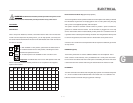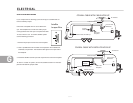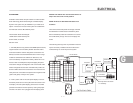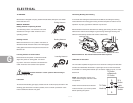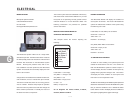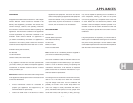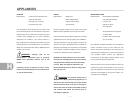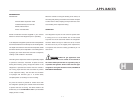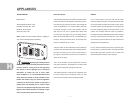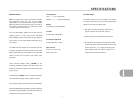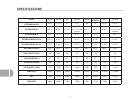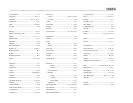
I
I - 1
SPECIFICATIONS
SPECIFICATIONS
Note: All weights were made on prototype vehicles.
Your production trailer may vary. For the weight
specifications of your specific trailer read the weight
label and check the manufacturing tag on the side of
your trailer. For label location, see information under
“Loading” section of this manual.
The Unit Base Weight (UBW) and the Net Carrying
Capacity (NCC) is not the same as the Unloaded
Vehicle Weight (UVW) and the Cargo Carrying Capacity
(CCC) shown on the Trailer Weight Information tag in
your vehicle.
The UBW and NCC weights are for the base unit with
no options and fluids. The UVW and CCC on the Trailer
Weight Information tag are weights for the individual
vehicle as built with its options and certain water
capacities.
Gross Vehicular Weight Rating (GVWR): is the
maximum permissible weight of this trailer when fully
loaded. It includes all weight at the trailer axle (s) and
tongue or pin.
Unit Base weight (UBW): is the dry weight of the base
unit with bedroom group and w/o options or fluids.
Net Carrying Capacity (NCC): is equal to GVWR-UBW.
Gross Axle Weight Rating (GAWR): is the value specified
as the load carrying capacity of a single axle system, as
measured at the tire-ground interfaces.
Axle Alignment:
Toe In 0 - 1/8” (All Models)
Camber 0 - 1 _ ° positive (All Models)
Battery
12 Volt Deep cycle (All Models)
Tire Size
ST225/75R15 (All Models)
Tire Inflation (PSI) Cold
ST225/75RI5 LRD 65 psi
Wheel Torque
Aluminum - 100 Ft. Lbs.
Steel - 95 Ft, Lbs.
Hitch Ball Height
The proper height will vary according to the weight
you carry and the tires you use. However, checking the
height on your trailer is relatively easy:
1. With trailer on fairly level ground measure from
ground to bottom of frame, front and rear.
2. Adjust front jack until measurements are equal
3. Now measure from ground to the inside top of ball
coupler. This figure is the hitch height. The hitch ball
is then usually set _” to 1” higher, according to the
spring weight of your tow vehicle, to allow for it to
settle when the trailer is hitched up.





